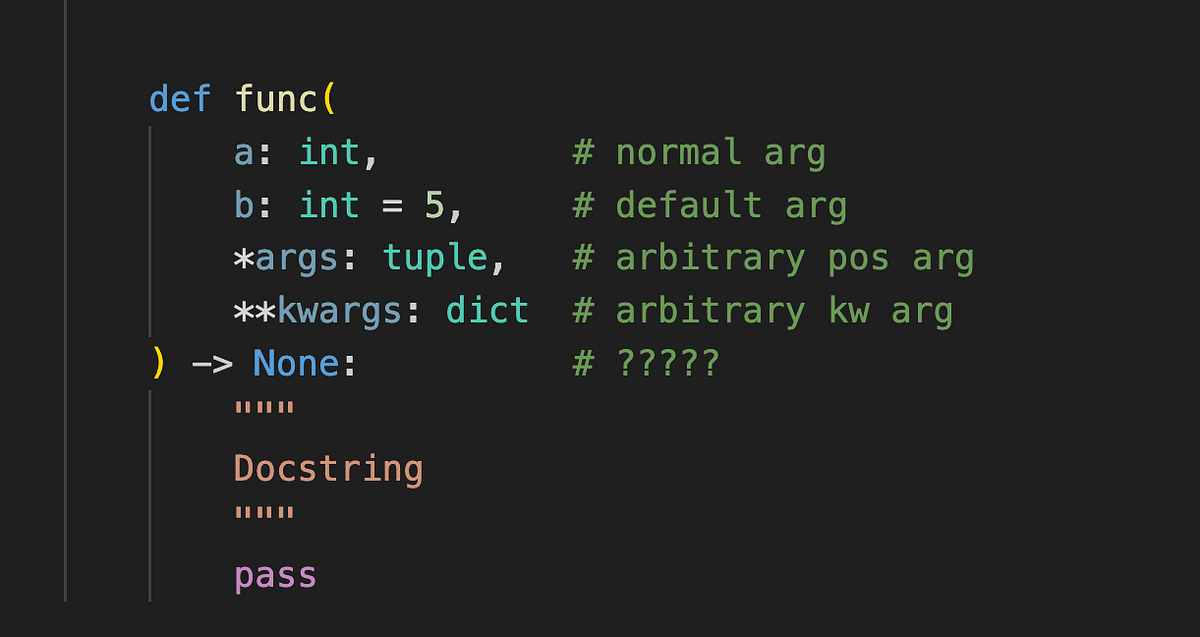Leveraging Type Hints and Docstrings to Enhance Python Function Readability and Maintainability
The content discusses seven Python function-related practices that the author regrets not knowing earlier. The key insights are:
-
Type Hinting in Functions: Using type hints (e.g.,
a: int,b: int,-> float) makes the function's expected input and output types explicit, improving code readability and enabling IDE support for type checking. However, type hints are not enforced, and Python will still allow passing in other data types. -
Docstrings: Adding docstrings to functions provides detailed documentation about the function's purpose, parameters, and return value. This helps other developers (and your future self) understand the function's usage and behavior.
-
Default Arguments: Defining default values for function arguments makes the function more flexible and easier to use, reducing the need to provide all arguments every time the function is called.
-
Keyword Arguments: Using keyword arguments (e.g.,
my_function(a=1, b=2)) makes the function calls more explicit and less prone to errors, especially when the function has multiple parameters. -
Variable Number of Arguments: The
*argsand**kwargssyntax allows functions to accept a variable number of positional and keyword arguments, respectively, making the functions more versatile. -
Unpacking: The unpacking operator (
*) can be used to pass the elements of a list or tuple as individual arguments to a function, simplifying function calls. -
Partial Functions: The
functools.partial()function allows you to create new functions by "freezing" some of the arguments of an existing function, making the function more reusable and composable.
自定义摘要
使用 AI 改写
生成参考文献
翻译原文
翻译成其他语言
生成思维导图
从原文生成
访问来源
zlliu.medium.com
7 Python Function Things I Regret Not Knowing Earlier
从中提取的关键见解
by Liu Zuo Lin 在 zlliu.medium.com 08-03-2024
https://zlliu.medium.com/7-python-function-things-i-regret-not-knowing-earlier-989b6a89d802
更深入的查询
